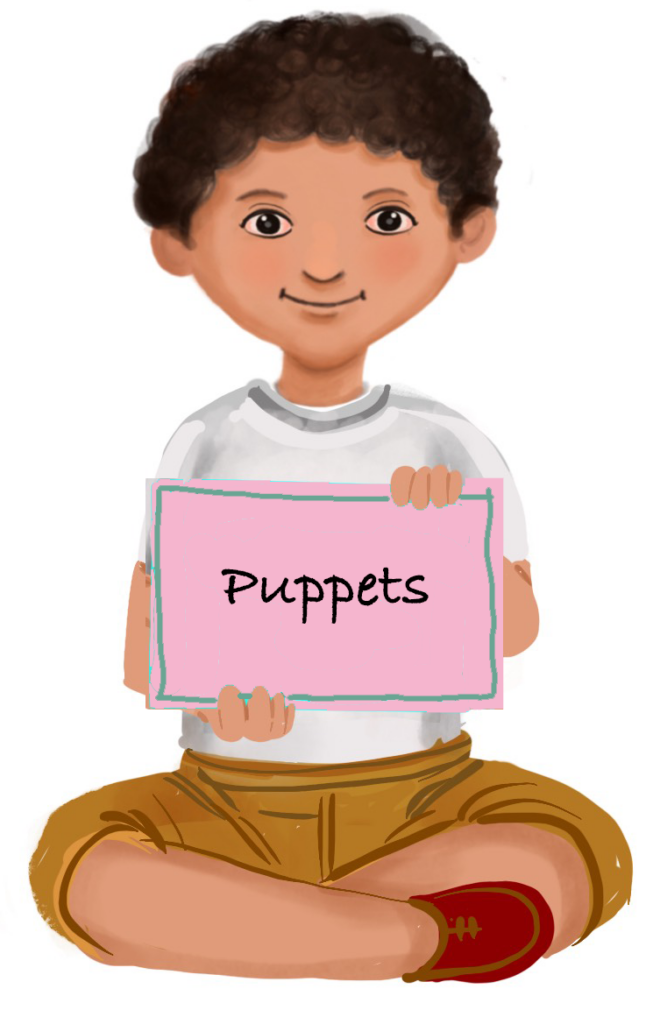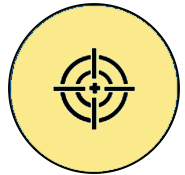
Horse
 Objective
Objective
To guide teachers in creating a puppet of a horse’s face for storytelling and other educational activities.
Estimated time to create the Horse Puppet
30 to 45 Minutes
Materials required for creating the Horse Puppet
- Chart paper – Yellow and Brown colour
- White chart paper for the eyes
- Pencil
- Black marker
- Glue drops or Fevicol
- Scissors
Preparation for activity
Keep all materials ready in advance. If you are using hot glue instead of Fevicol, ensure it is properly heated and ready for use.
Procedure
- Take a rectangular piece of yellow chart paper.
- Roll it into a cone shape and flatten it. Using a pencil, draw the face of the horse on one side. Cut along the outline to get the hollow face of the horse.
- Take another small rectangular piece of yellow paper and fold it into half. On one side, draw the shape of a horse’s ear. Cut along the outline, to get a pair of ears. Take one ear piece and make a small slit at the bottom. Slightly overlap the slit ends and paste them together. Now the ear piece resembles that of a Horse. Repeat the same for the second ear.
- Apply fevicol only to the bottom rear side of each ear. Fix them securely onto the head part of the horse.
- Take a strip of brown chart paper and make small cuts along one edge to create hair strands. Fix this strip on the head just below the ears.
- On another piece of brown paper, draw and cut out the shape of the nostrils. Paste them on the lower part of the face.
- For the eyes, fold a small piece of white paper in half. On one side, draw the shape of an eye using a pencil. Cut along the outline to get a pair of eyes. Apply Fevicol and fix them on the face at a slight angle. Take care to place both eyes at equal distance and the same angle.
- Use a black marker to draw the outline and add the eyeballs.
- Now the face of the horse is ready.
- For the finger pipe: roll a small strip of yellow paper into a tube that fits your forefinger (index finger) and glue the edge to secure it.
- Fix this paper pipe inside the hollow portion of the horse’s face using fevicol.
- Allow it to dry for a few minutes. The puppet is now ready.
- Insert your forefinger (index finger) into the paper pipe.
- Move your finger up, down and sideways to demonstrate the movement of a horse’s head.
Step by Step Pictures to create the puppet
Important Tips
- For this type of puppet, it is better to use thick chart paper to ensure durability and allow for repeated use.
- Wedding cards or book covers can be good alternatives to drawing sheets.
- Reference images from drawing books or the internet can be helpful while designing the puppet.
- While creating the puppet, try to replicate the character illustration from the children’s textbook. Once the puppet is ready, refer to it by the character’s name from the textbook. This helps children connect with the content and improves recall.
- The teacher should use the puppet at an appropriate time, perhaps while narrating the story in a funny and humorous way. Intentional mistakes can also be made to encourage children to correct them, making the session more interactive and engaging.
Precautions
Precautions to be taken while manipulating finger puppets:
- Always keep the puppet’s face directed towards the audience.
- The Puppet Master’s focus should remain on the puppet at all times.
- Only the puppet that is “speaking” should be animated; all other puppets should remain still.
Troubleshooting:
- While making the paper pipe, ensure it matches the exact size of the finger you will be using. This helps to move the puppet properly.
- Use a cutter carefully to make clean, precise holes.
- The holes should match the size of your fingers. If the hole is too large, the puppet won’t stay upright on your finger. If the hole is too small, it will be difficult to insert your finger.
 Notes to the Teacher
Notes to the Teacher
Puppets can be effectively used in the classroom to help children understand and express emotions. They are also valuable tools for teaching rhymes, songs, stories and more.
In addition to enriching learning experiences, using puppets supports the development of motor skills such as hand – eye coordination. They also enhance communication and social skills, improve focus and concentration, and help reinforce concepts and values in an engaging way.
Using the Learning Teaching Material
The teacher can demonstrate a puppet show as an example. Students can then be encouraged to create their own puppets and present a puppet show in the classroom.
Video: How to use Learning Teaching Material
| Source and Attribution of images All images used in the above Assets and Aids are originally created. |
| This digital material has been developed by the Sri Sathya Sai Vidya Vahini Inclusive Education Project, a unit of Sri Sathya Sai Central Trust, Prasanthi Nilayam, as a collaborative offering in the service of our nation. |